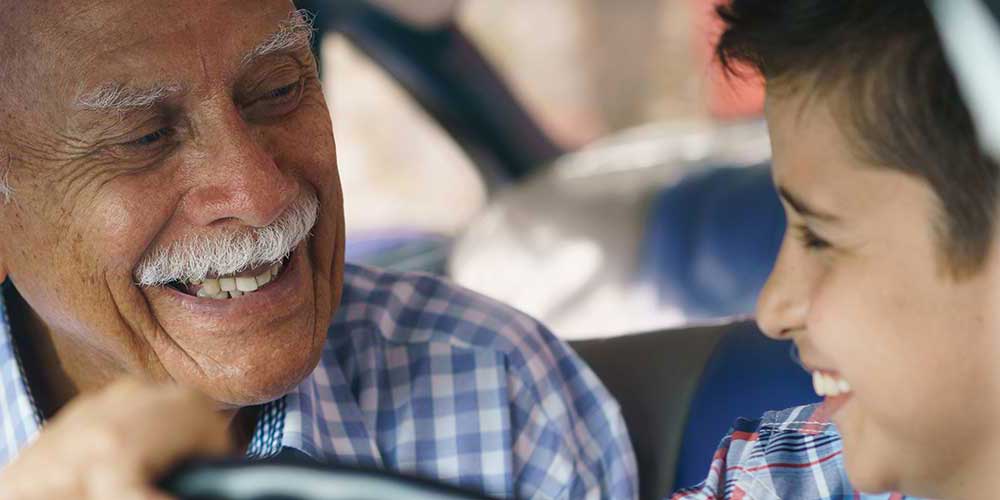By Robert Tate, Award-Winning Automotive Historian and Researcher
Packard Illustrations from the Robert Tate Collection
Published 5.15.2024
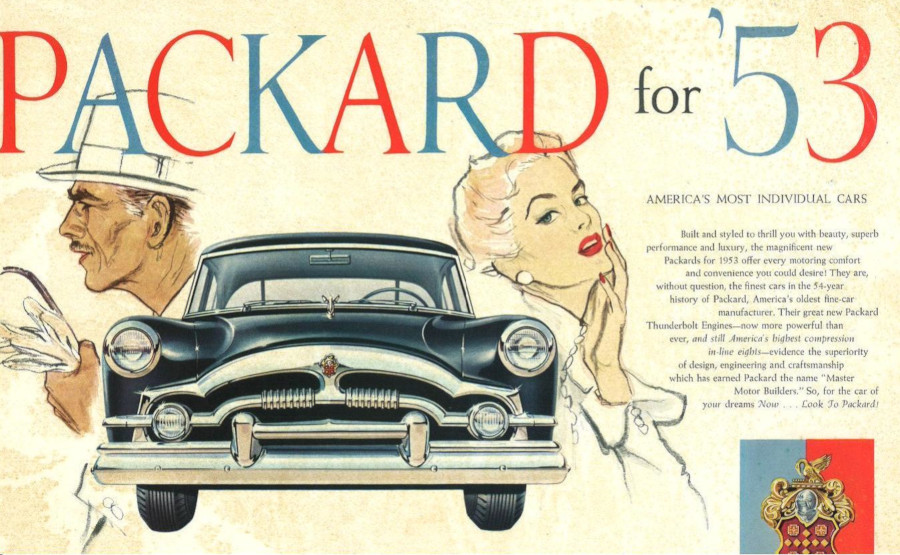 A 1953 Packard brochure illustration (Robert Tate Collection)
A 1953 Packard brochure illustration (Robert Tate Collection)
The 1953 Packard sales brochure says their automobiles are “Built and styled to thrill you with beauty, superb performance and luxury.”
The 1953 Packards were introduced on November 21,1952 and did not represent significant change from the 1952 models. The 1953 line included seven models like the beautiful Limousine and Executive sedan, along with the Custom Formal sedan which was by Derham. The Patrician was a limited-edition model, and the Cavalier was one of the most popular sellers that year. The Mayfair, along with the Packard convertibles, were also great-looking models.
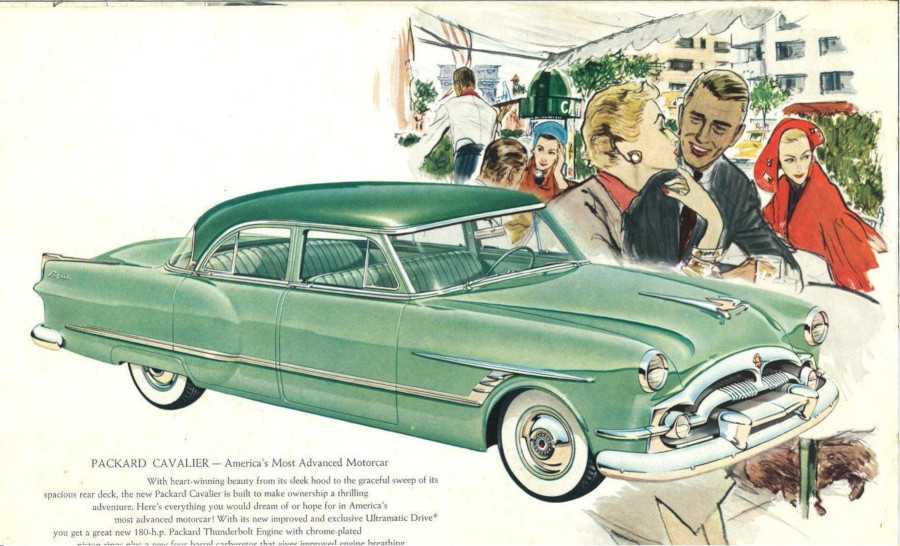 Another 1953 Packard brochure illustration (Robert Tate Collection)
Another 1953 Packard brochure illustration (Robert Tate Collection)
The automotive illustrations from this brochure represent beautiful artwork created by hand to sell Packards in America. Today, auto dealerships do not provide any printed sales materials because everything is online.

The new Packard Caribbean had a highly stylized design by Dick Teague, who I had known for many years. Introduced to the public in January, the model was based on the Pan American show car convertible, which Henney built for Packard in 1952. Some automotive historians have said the model was built by Mitchell-Bentley of Lona.
In 1953, Packard offered a hardtop-style model for the public with two-tone paint and a pillarless roof design at a reasonable price. The most popular 1953 Packard model was the Deluxe Clipper priced at $2,745.
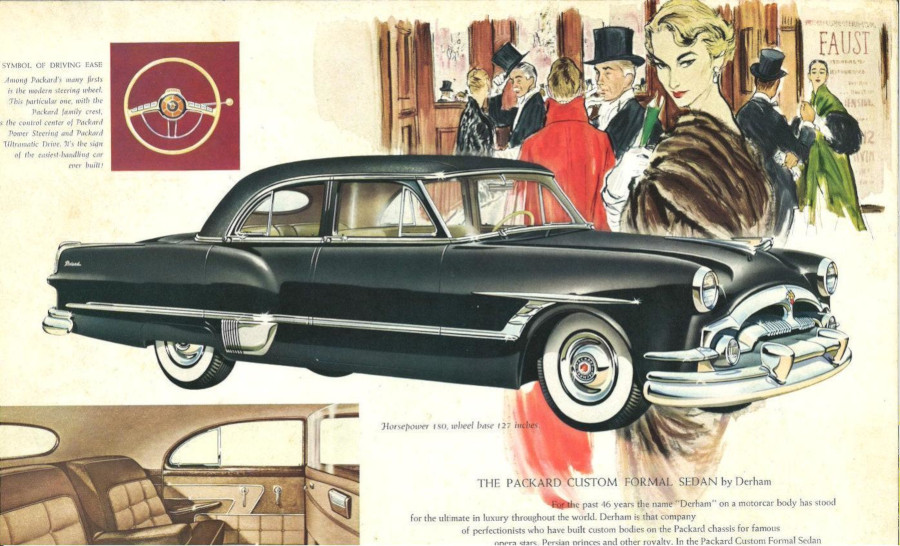 1953 Packard Custom Formal sedan illustration (Robert Tate Collection)
1953 Packard Custom Formal sedan illustration (Robert Tate Collection)
The 1953 Packard eight-passenger bodies were built by the Henney Company of Freeport, Illinois. Most Packard models for 1953 offered Ultramatic automatic transmission, along with power steering which was an option available for the additional cost of $190.
In 1953, Packard introduced some of its new models like the new Cavalier four-door sedan or the Mayfair Hardtop Coupe in front of its building on East Grand Blvd. The model was priced at $3,280 and sold 5,150 units.
 1953 Packard limo and Executive Sedan illustration (Robert Tate Collection)
1953 Packard limo and Executive Sedan illustration (Robert Tate Collection)
During the 1950s, many automotive companies offered spare tires mounted at the rear as a styling feature, known as the continental look. In addition, Packard always offered beautiful hood ornaments to add more grace and style to their car’s appearance. The 1953 Packard hood ornaments were both beautiful and tastefully done.
 1953 Packard Mayfair illustration (Robert Tate Collection)
1953 Packard Mayfair illustration (Robert Tate Collection)
Packard promoted their new 1953 line as the “Most beautiful cars on the road.” Some automotive historians have said the 1953 models were the finest made in the 54-year history of Packard in America, but others felt the Packards were not that exceptional compared to Cadillac and Lincoln models available that same year.
 1953 Packard Convertible illustration (Robert Tate Collection)
1953 Packard Convertible illustration (Robert Tate Collection)
At this time, Packard was being run by James Nance (1900-1984), who had been hired in 1952 to turn the company around. It was certain that changes were coming.
In 1954, Packard Motor Car Company purchased the Studebaker Corporation of South Bend, Indiana. Unfortunately, many automotive historians have called this the worst merger in automotive history, as Packard as we knew it would cease to exist.
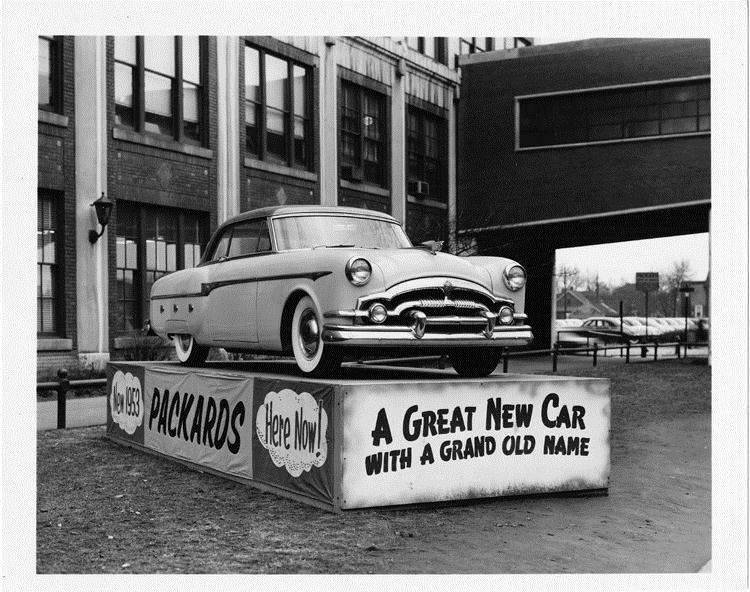 A 1953 Packard on display (Mac's Motor City Garage)
A 1953 Packard on display (Mac's Motor City Garage)
In conclusion, the 1953 line of Packards were stylish automobiles that will always be a great part of the company’s rich history.
Bibliography
Dammann, George H. and Wren, James A. “Packard.” Motor Books International, 1996.
Langworth, Richard M. “Encyclopedia of American Cars 1930-1980.” By the Auto Editors of Consumer Guide. Beekman House, New York, 1984.
Packard: America’s Most Individual Cars. Packard Motor Car Company, Detroit, Michigan. 1953 color advertising illustrations.


